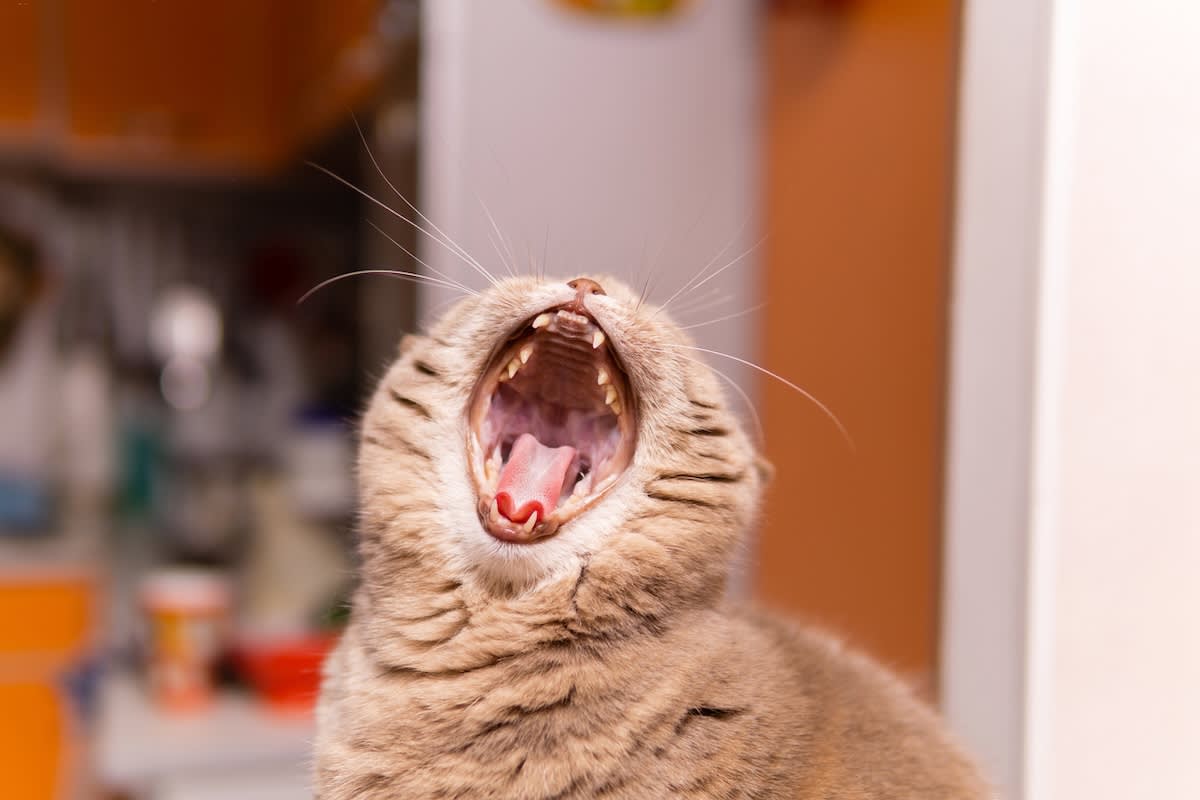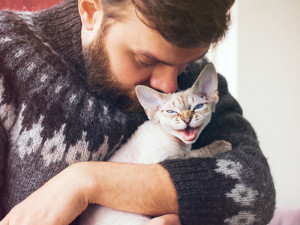Why Some Cats Are Super Loud – and Others Barely Meow
Are they a Chatty Cathy or Silent Simon?

Share Article
For years, I had two cats, a boy, Will, and a girl, Bonnie. Will was a massive boy, with grey and white fur and looked a bit like a Bengal. Not only did his body take up space, but his loud noises often filled the house. If he needed anything – to go outside, have his food, or just be adored – he would let me know with a loud and distinctive meow. When stroked, his purr could be heard from an adjacent room.
By contrast, Bonnie, a small-boned black and orange cat, was silent, always observing from a distance, never to be heard until she jumped in my lap for a cuddle.
I’d always wonder why Will and Bonnie were so different. Their mix of breeds? Perhaps their parent’s dispositions? Or maybe the homes they came from dictated their personalities.
If you’ve had numerous cats, you have probably have observed the same: they all have distinct personalities and quirks. But there is little known about why specific traits exist, and why some cats are more vocal than others.
When we go back in time, before domestication, cats were solitary creatures, with most of their social behaviours restricted to mother-kitten interactions. Other than this relationship, they rarelyopens in new tab meowed at each other. Once they started interacting with humans, they found they had a survival advantageopens in new tab if they could communicate with humans. Hence why we have always thought that cats vocalised – to survive.
But could it be more than just social conditioning? Could it be something in their genetic makeup?
Cats’ genetic backgrounds informing their behaviours have rarely been investigated, but in a new studyopens in new tab, Yume Okamoto and colleagues at Kyoto University, set out to explore the relationship between a cat’s genes and behaviour, specifically their vocalisations, or lack of.
“When we called for participants, we were moved to receive responses from 265 cat owners from across Japan in just a single day, and received kind messages,” Okamoto saidopens in new tab of the research. “This reminded us of the strong public interest in cat research.”
Cat parents across Japan were asked to complete a questionnaireopens in new tab with 23 categories about their cat (purring and vocalisations directed at people included), and to take a cheek swab from their pet to provide a DNA sample.
Scientists looked at the androgen receptor gene (AR), which is located on the X chromosome and primarily regulates the body’s response to hormones like testosterone.
The AR regulatesopens in new tab the formation of male reproductive organs, secondary sexual characteristics and reproductive behaviour.
They researchers looked at how whether the androgen receptor gene variants (alleles) had short or long repeat sequences in 280 spayed or neutered mixed-breed cats compared to the behaviours reported by their pet parents, and then looked at how they appeared in other species of cat.
In humansopens in new tab and dogsopens in new tab, shorter versions of the alleles have been linked with increased aggression and extraversionopens in new tab.
Would the same be true of cats?
Researchers from the study found that cats with shorter alleles vocalised more than those with longer ones.
Male cats with shorter alleles displayed higher “directed calls” or “vocalisations” scores, indicating the gene’s connection to vocal communication.
But in female cats, short alleles showed higher “stranger-directed aggression”.
Cats with longer, less-active variations of AR genes tended to be quieter. These shorter variations were more common in pedigree breeds typically bred for docility.
In cats raised by pet parents since they were little kittens – typically pure breeds – the results of the study indicate there is less importance of vocal communication due to longer strands of the gene variation.
The findings also suggest that domestication and selective breeding have influenced how cats communicate with people, and that ancestral traits like aggression may still be usefulopens in new tab in high-stress or resource-scarce domestic environments.
Traits linked to the shorter variant, like increased vocalisation or assertiveness, couldopens in new tab offer advantages in getting a human’s attention for their needs in uncertain or competitive settings. But on the flip side, the shorter alleles could manifest in aggression, suggesting domestication can produce both desirable and challenging traits. Sometimes, being vocal and even a bit aggressive around humans pays off.
If this all sounds a bit complicated, fear not. The main takeaway from the study is that, with further research, these findings could help us better understand cats – and, in turn, improve how we care for them. In the future, it might be possible to understand what ‘normal’ behavior looks like for your cat based on their genetic makeup. For example, knowing that cats with longer alleles tend to be less vocal could help prevent health issues or distress from being overlooked simply because they’re not making noise about it.
While my Will and Bonnie weren’t part of the study, I might assume, from the conclusions of this study, that Will’s chattiness and Bonnie’s silence could be down to their genetic makeup – not just how they were raised. If they were still around today, I wonder how this would have impacted our relationship.
Either way, the study serves as a good reminder to parents of quiet cats that, like humans, just because they’re not chatty, it doesn’t mean there’s not a whole lot going on underneath the surface.
Resources
Brown, Sarah Louise, and Sarah Louise Brown. “The Social Behaviour of Neutered Domestic Cats (Felis Catus).opens in new tab” Eprints.soton.ac.uk, 1993.
Okamoto, Yume, et al. “Association between Androgen Receptor Gene and Behavioral Traits in Cats (Felis Catus).opens in new tab” PLOS One, edited by Maria Stefania Latrofa, vol. 20, no. 5, Public Library of Science (PLoS), May 2025, p. e0324055.

Lauren Crosby Medlicott
Lauren is a freelance journalist who lives with her family and black labrador, Betsie, in the south Wales valleys. When she’s not working, she loves going for a dip in a nearby river and hiking in the Brecon Beacons.
Related articles
![kitten hiding]()
What is The 3-3-3 Rule For Cats?
Why your cat doesn't love you yet... but might eventually
![cat entering litter box]()
What is Middening? Why Your Cat’s Pooing Habits Are Sending a Message
Get the scoop on this interesting cat behaviour
Cat Chat: Why Do Cats Meow At Humans... But Not Each Other?
Meowing isn’t something adult cats naturally direct at each other – they’ve adapted it just for us
![A cat outside showing its bottom teeth.]()
What’s All the Cat Chatter About?
Scientists believe they could be mimicking the calls of their prey
![cat meowing]()
The Cat’s Meow – What Does it All Mean?
How to decode your cat’s love language when one meow has many meanings




